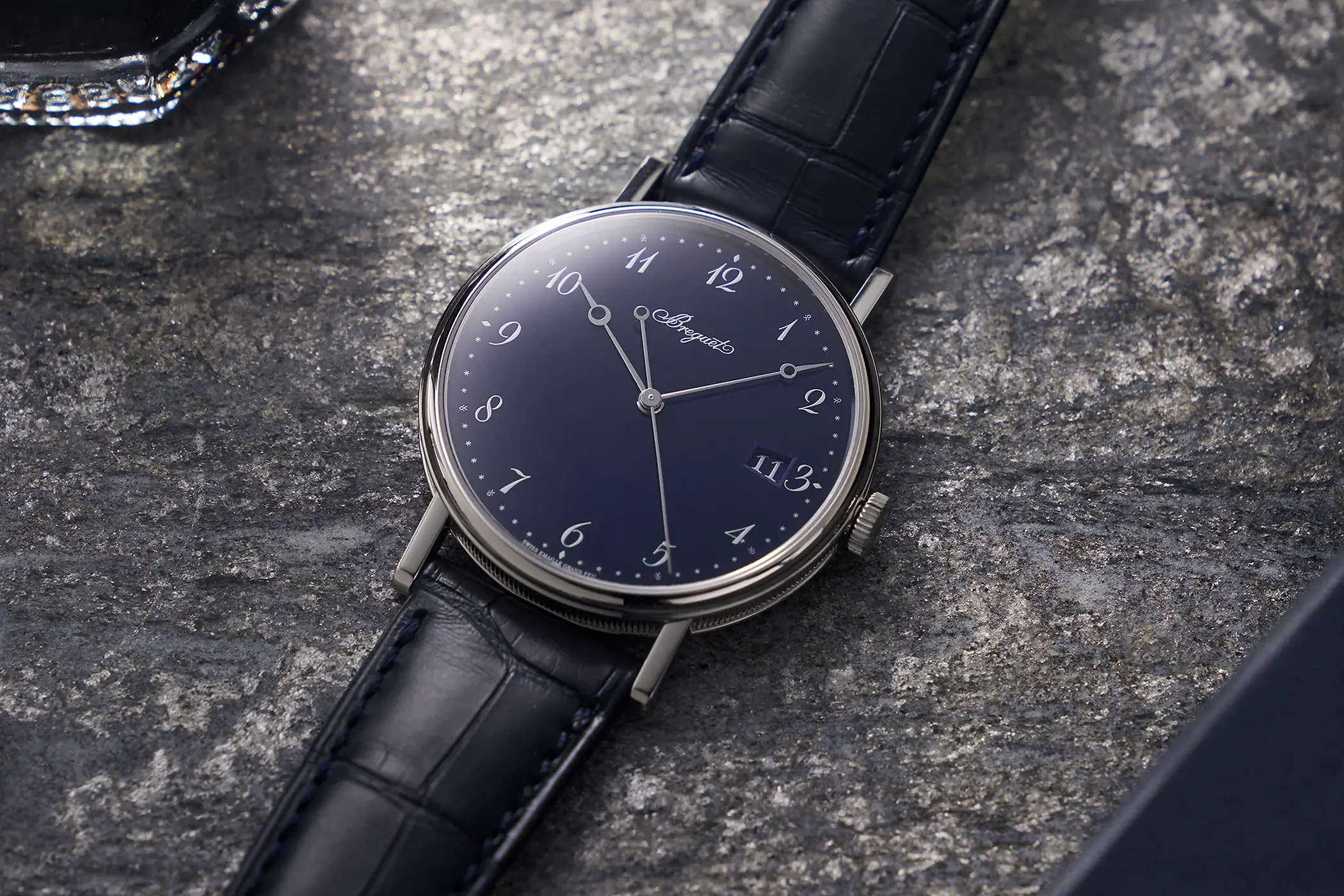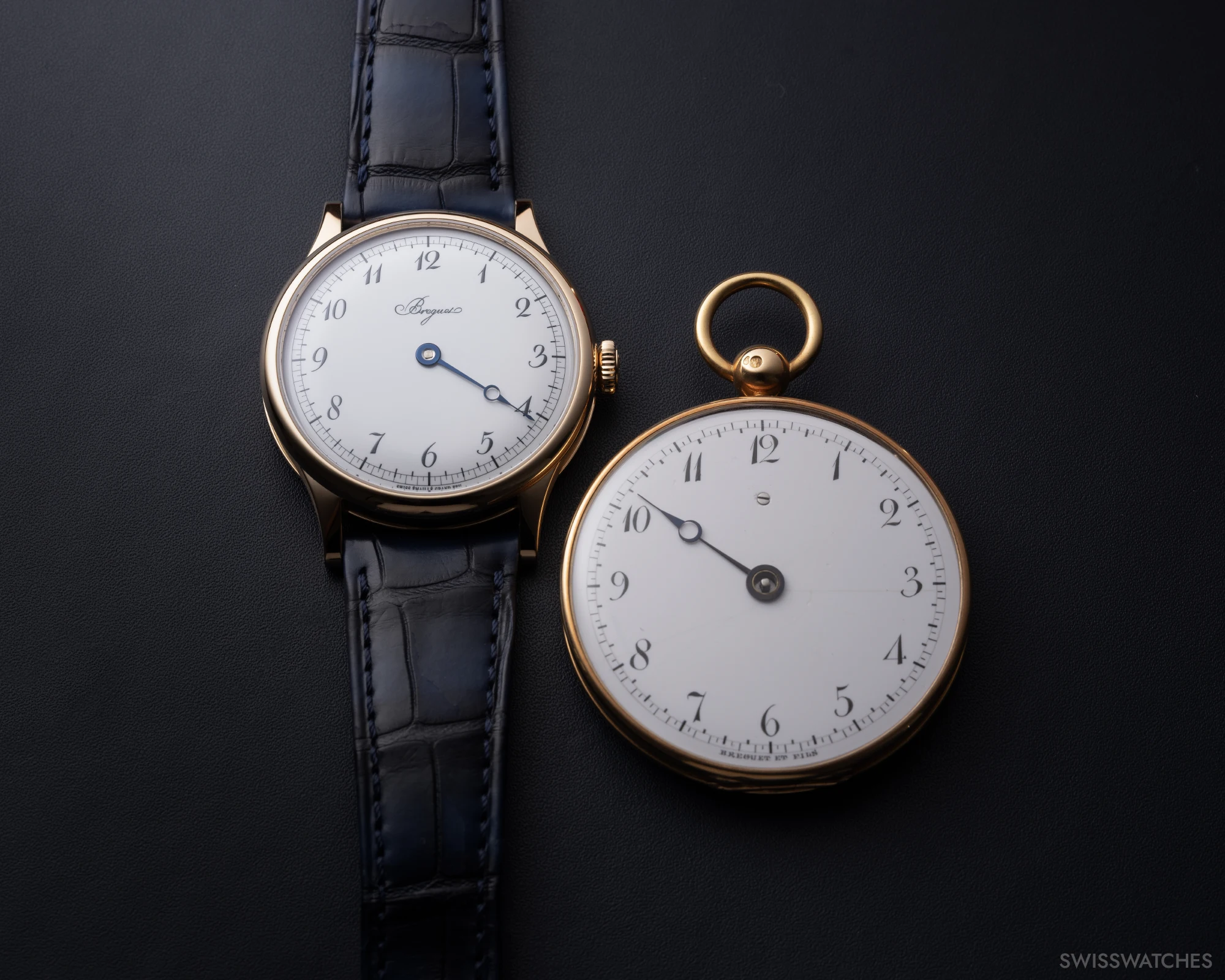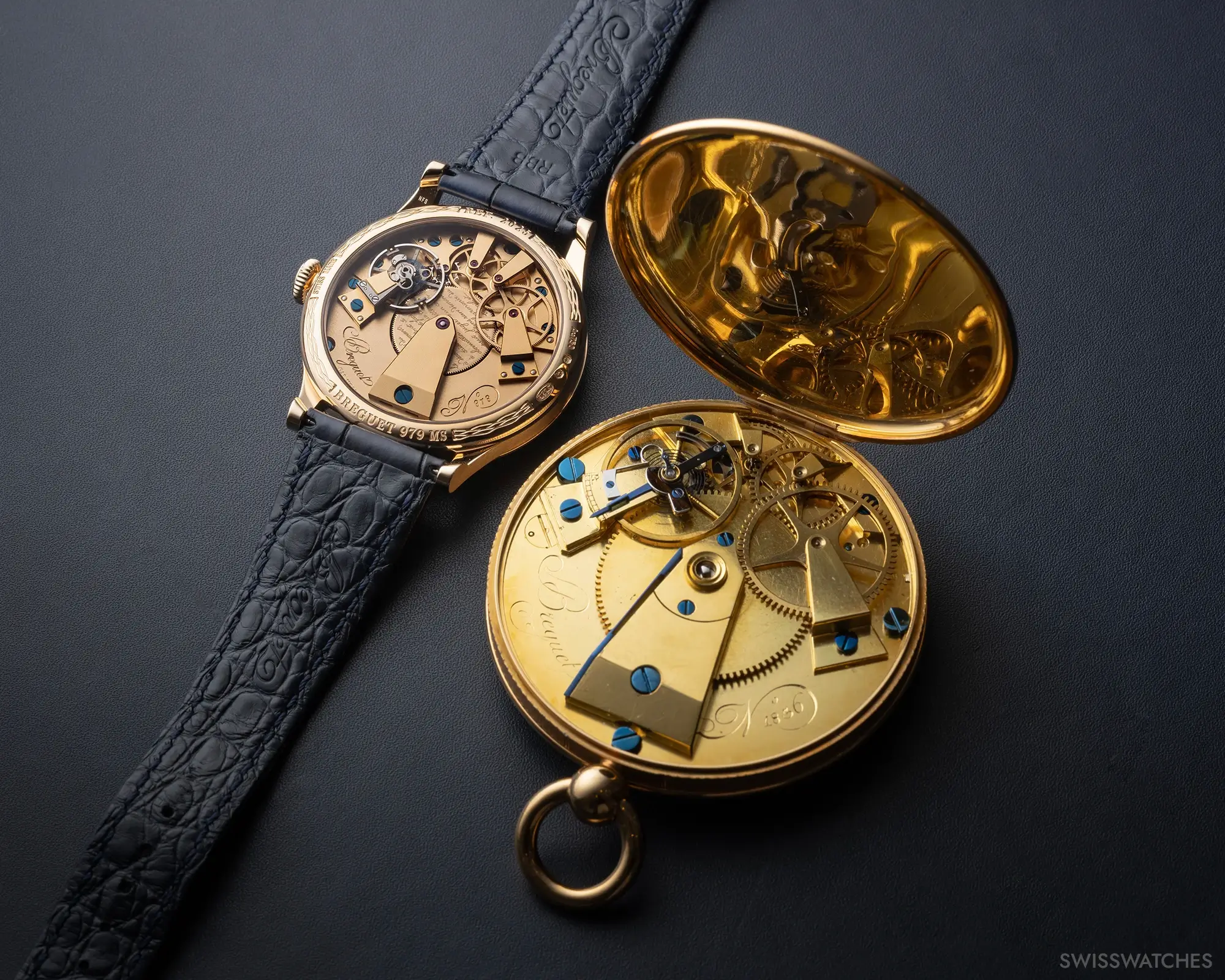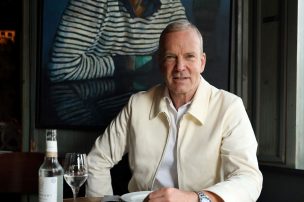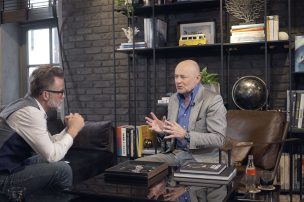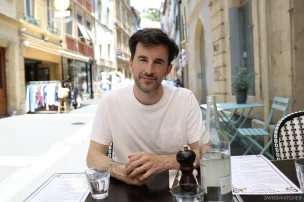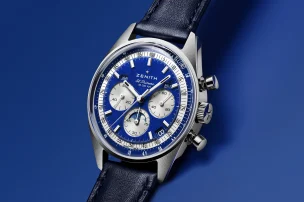
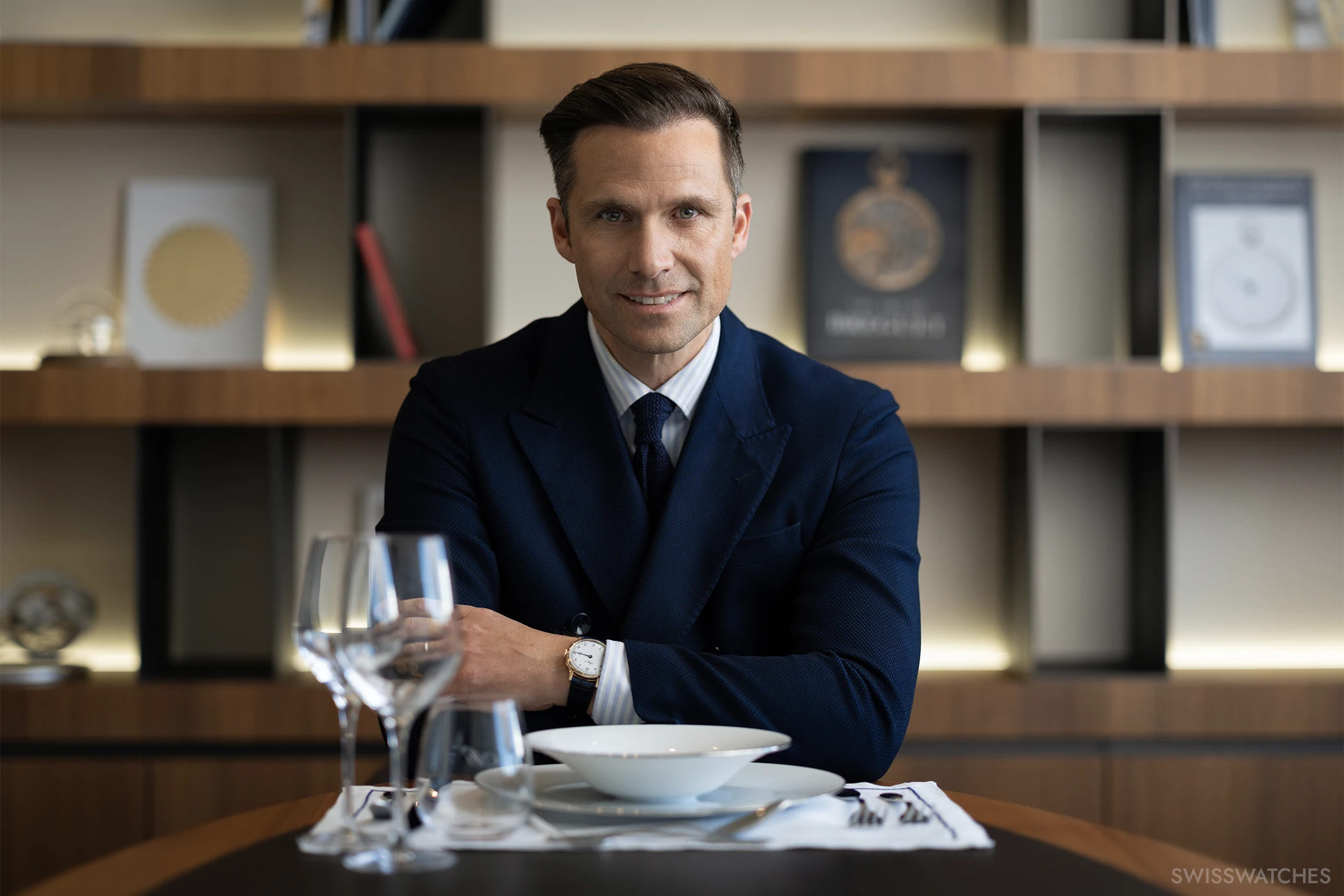
Lunch With: Breguet CEO Gregory Kissling
With Gregory Kissling – the man who, over the course of more than 20 years at Omega, played a leading role in product development, including the revival of the Calibre 321 and the creation of Calibre 1932, the first movement to combine an integrated chronograph with a minute repeater – a fresh impetus is entering a brand whose historical legacy holds immense potential. Yet, according to many collectors and experts, much of that potential has remained largely untapped in recent years.
At Breguet, Kissling will now take the helm of a maison whose origins date back to 1775 – and which has since registered over 200 patents that have had a lasting impact on the world of mechanical watchmaking. These include major milestones such as the first self-winding watch in 1780, the invention of the tourbillon in 1801, and the creation of the first wristwatch in 1810.
Precisely against this backdrop, expectations for Kissling are considerable: in his new role, he faces the challenge of unlocking dormant potential and channelling the brand’s vast horological heritage and arsenal of artisanal techniques – including six different types of tourbillon and a wide array of Guilloché motifs – into new models that, enriched with a modern dimension, are set to ignite fresh desire among collectors.
We sat down with Kissling over lunch to talk about his new role as CEO, the upcoming plans for the brand’s 250th anniversary, and – not least – the direction in which he intends to steer this storied maison into the future.
What does a mechanical watch mean to you personally? Which watch are you wearing today and which one do you wear the most?
For me, a mechanical watch is something very personal — like wearing a part of the heart on the wrist. There’s a quote, which I believe comes from Sir David Salomons, that says: “To carry a fine Breguet watch is to feel that you have the brains of a genius in your pocket.”
Wearing a Breguet on the wrist, however, is not only about owning a refined mechanical watch or appreciating artistic crafts — it’s about something more. It represents the legacy of the founder of modern watchmaking. When you wear a Breguet, it’s not just about aesthetics or design balance. You are wearing a piece of history.
That’s something we aim to preserve — and to communicate more clearly. Breguet is not only about fine watchmaking in the traditional sense; it is about heritage and continuity. This is why my daily watch is the Classique Ref. 5177. It has a smaller 38 mm case, Breguet numerals, Breguet hands, and an enamel dial — a nod to the brand’s early use of enamel before the introduction of guilloché. The watch features a fluted caseband, guilloché rotor and an automatic calibre — bringing together many of Breguet’s core innovations in a single timepiece.
Today, I am wearing our newest model that we just launched, the Classique Souscription 2025.
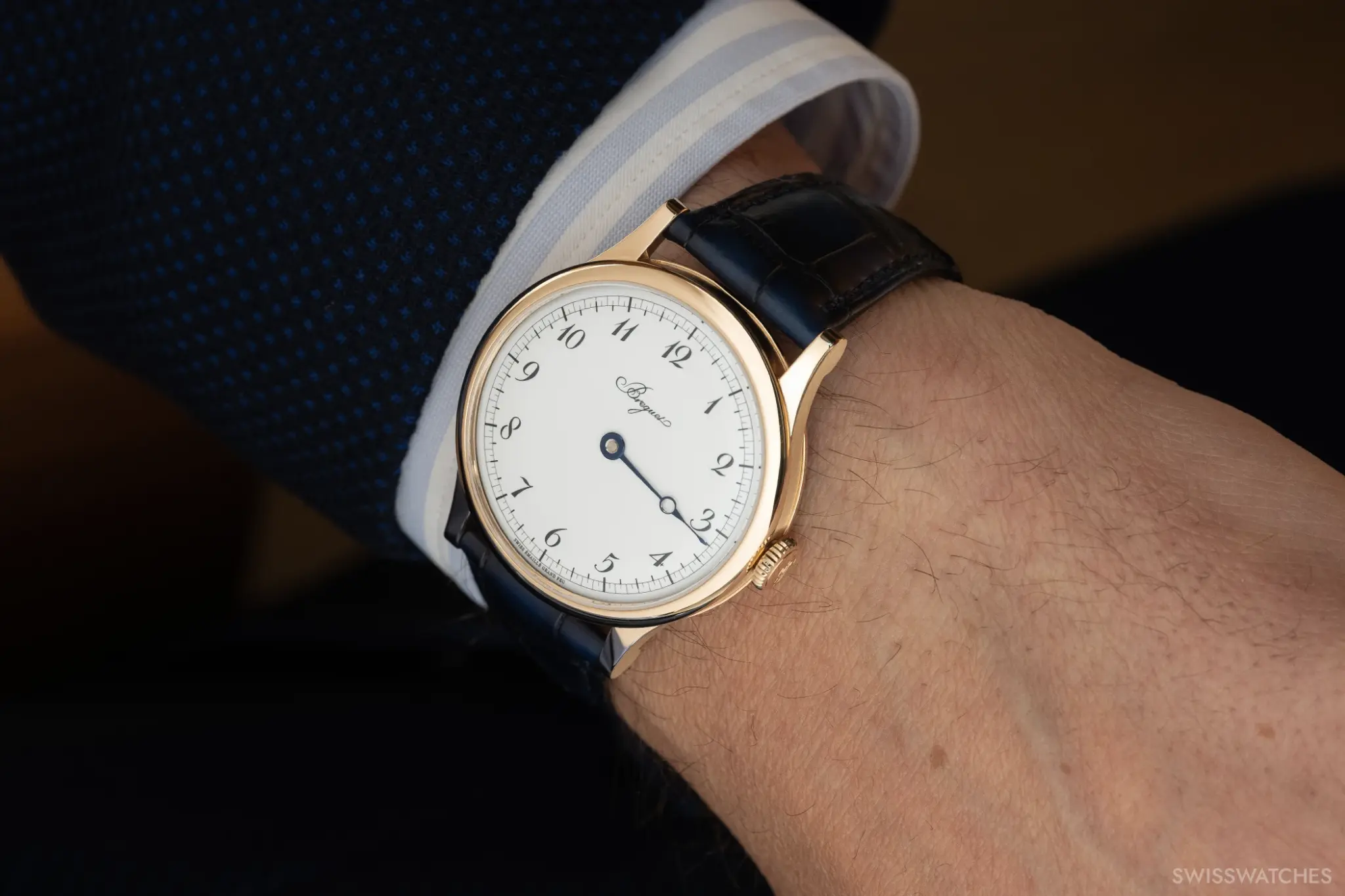
You were highly successful with Omega in recent years, especially as Vice President of Product Development. Now that you’ve taken over as CEO of Breguet, how does this new role differ from your previous one?
Omega and Breguet are two very different brands — and the roles themselves are fundamentally different. As CEO, the responsibility goes far beyond product development. The two maisons have distinct histories, identities and manufacturing cultures.
What they do share, however, is their place within the same group — and a strong passion for the product. The ambition to keep innovating, to push boundaries, and to introduce meaningful new developments is something both brands have in common.
Arriving at Breguet, one of my priorities is to continue innovating, while staying true to the brand’s DNA — and to find new ways of telling its story. That’s precisely the idea behind our upcoming 250th anniversary collection – after all, a single product is not enough to convey what Breguet represents. There are simply too many layers to its history. So instead of focusing on just one watch, we chose a broader approach: we are launching a series of timepieces over the course of the anniversary year, with each one linked to a specific invention from Breguet’s long history — dating back to the brand’s founding in 1775.
You mentioned the 250th anniversary — a milestone only very few brands can claim. Since you took over as CEO in October, how much were you able to influence the anniversary plans, and what did you personally bring to the celebration?
I actually started unofficially before the 1st of October. So by the time I formally took over, I already had a clear strategy in place for Breguet’s 250th anniversary — a plan that had been approved by the Swatch Group.
My first task was to communicate this plan and begin preparing the anniversary activities. Rather than organising a single major event or unveiling just a few products, the idea was to spread the celebration over the course of the entire year.
In the first few months of 2025, we focused on highlighting Breguet’s inventions and teasing upcoming launches — including a preview of the new in-house gold alloy, Breguet Gold. Recently, we officially introduced the first anniversary model: the Classique Souscription 2025.
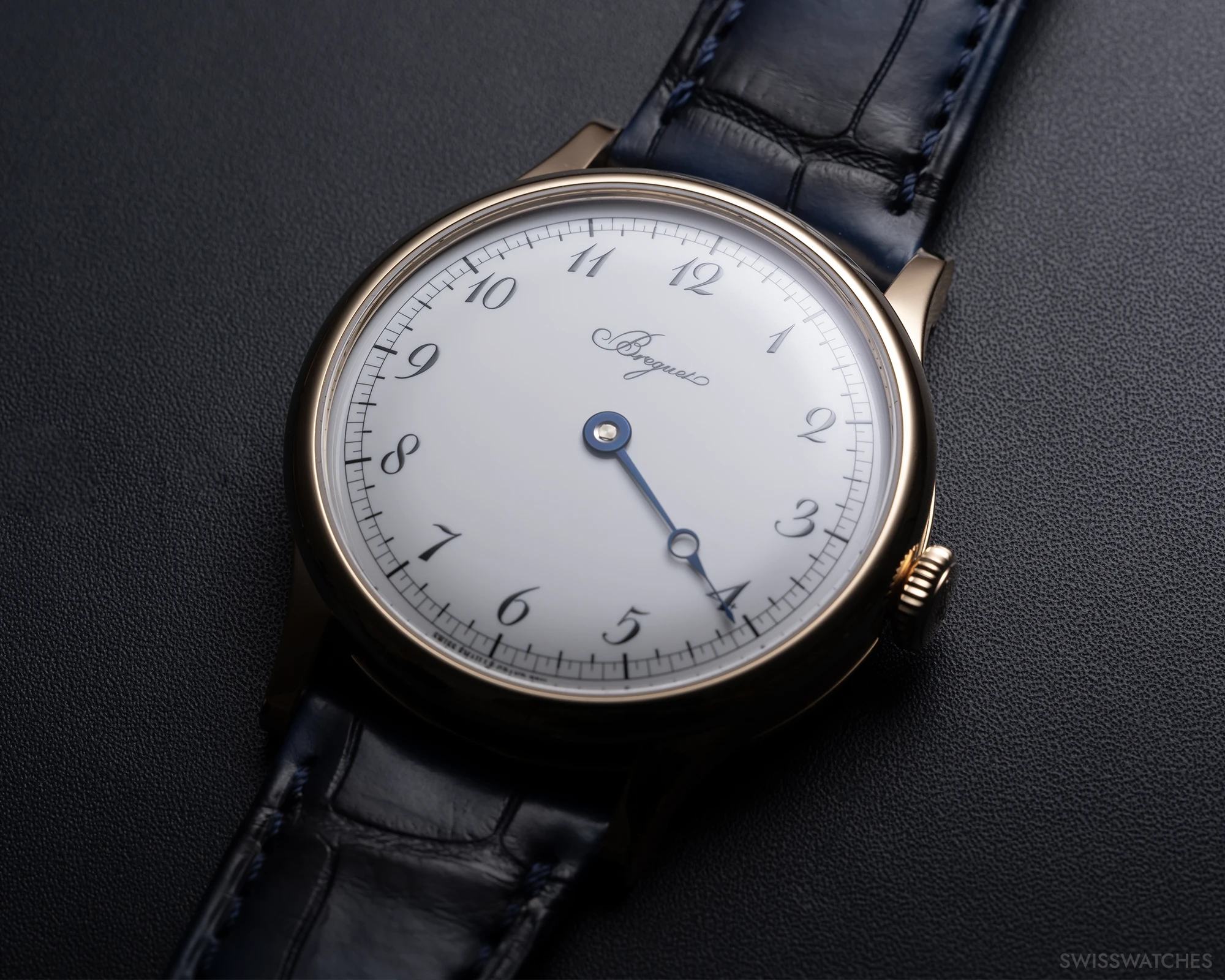
Instead of one central launch event, we’ve planned a global tour. We started in Paris and will conclude again in Paris — in Versailles, a location with strong ties to the brand, thanks to Queen Marie-Antoinette of France, who owned several creations by the watchmaker. Between these two key stops, we will visit several major cities across Europe, Asia, the Middle East and the United States.
At each stop, we will launch a new anniversary model — each one tied to one of our core collections. This approach reflects the fact that Breguet isn’t built around a single watch. Instead, the brand comprises six collections: Reine de Naples, Marine, Type XX, Classique, Tradition, and Héritage. Each of these collections tells a different part of Breguet’s story, and the upcoming releases are designed to reflect that — while also referencing specific inventions from the brand’s history. Since its founding in 1775, Breguet has registered more than 200 patents — including the first wristwatch ever made. These inventions will form the foundation of the anniversary collection.
A key element uniting the new models will be the new Breguet Gold — a proprietary alloy of gold, silver, copper and palladium. It’s lighter in colour and softer than traditional red gold, and will be used across most of the anniversary pieces, with a few exceptions. Another common feature will be the new Quai de l’Horloge guilloché — named after the address where Abraham-Louis Breguet established his workshop in the late 18th century, on the Île de la Cité in Paris. The Quai de l’Horloge pattern will appear across the anniversary collection: on the dial, the oscillating weight, and the caseback.
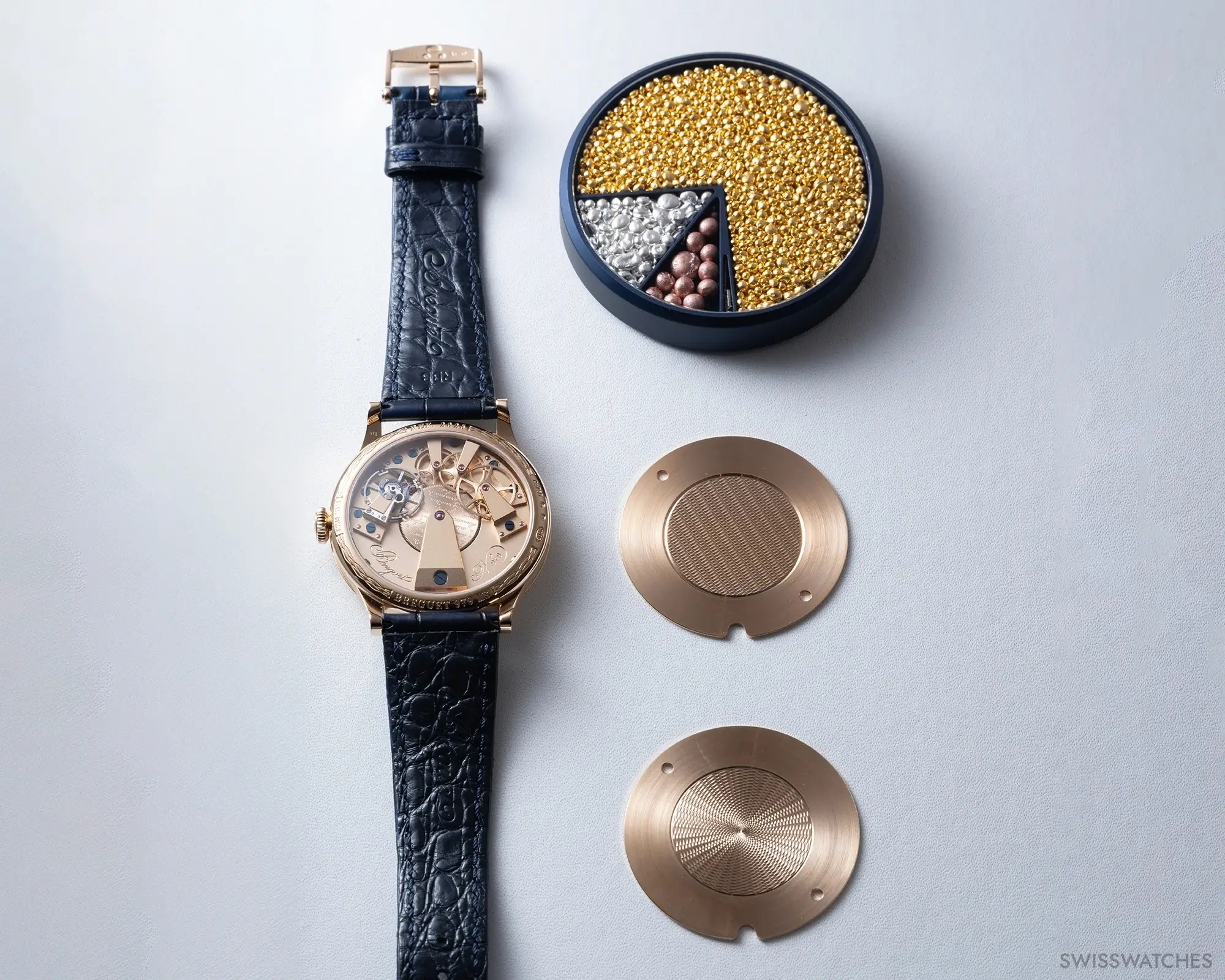
What was the biggest surprise for you when you joined Breguet?
Before joining the brand, I was already familiar with Breguet — going back to the early days of my career and even during my horological studies. There are so many important books written about the brand, and I’ve always followed its developments closely. Throughout my career, Breguet was a kind of guiding light — not just for what it achieved in the past, but also for its more recent innovations.
Take the Magnetic Pivot, introduced in 2010: a magnetic bearing system that stabilises the balance staff using two asymmetrically strong magnets. The result is a near-suspended construction that reduces friction and automatically returns to its optimal position after shocks. That was a genuine breakthrough. So Breguet has been ahead of its time — not just in terms of complications or artistic craftsmanship, but also in technical performance and chronometry.
What I didn’t fully grasp until joining the company was just how much knowledge is still alive within its walls — and how much there is still to learn. I’ve been especially impressed by the people: highly skilled individuals working across all departments, from research and development to bench-level craftsmanship and design.
Discovering this level of talent across so many disciplines was a real highlight for me. And now, having such a team around me — paired with a clear strategy across product, communication and distribution — gives me confidence that the brand’s future is on the right path.
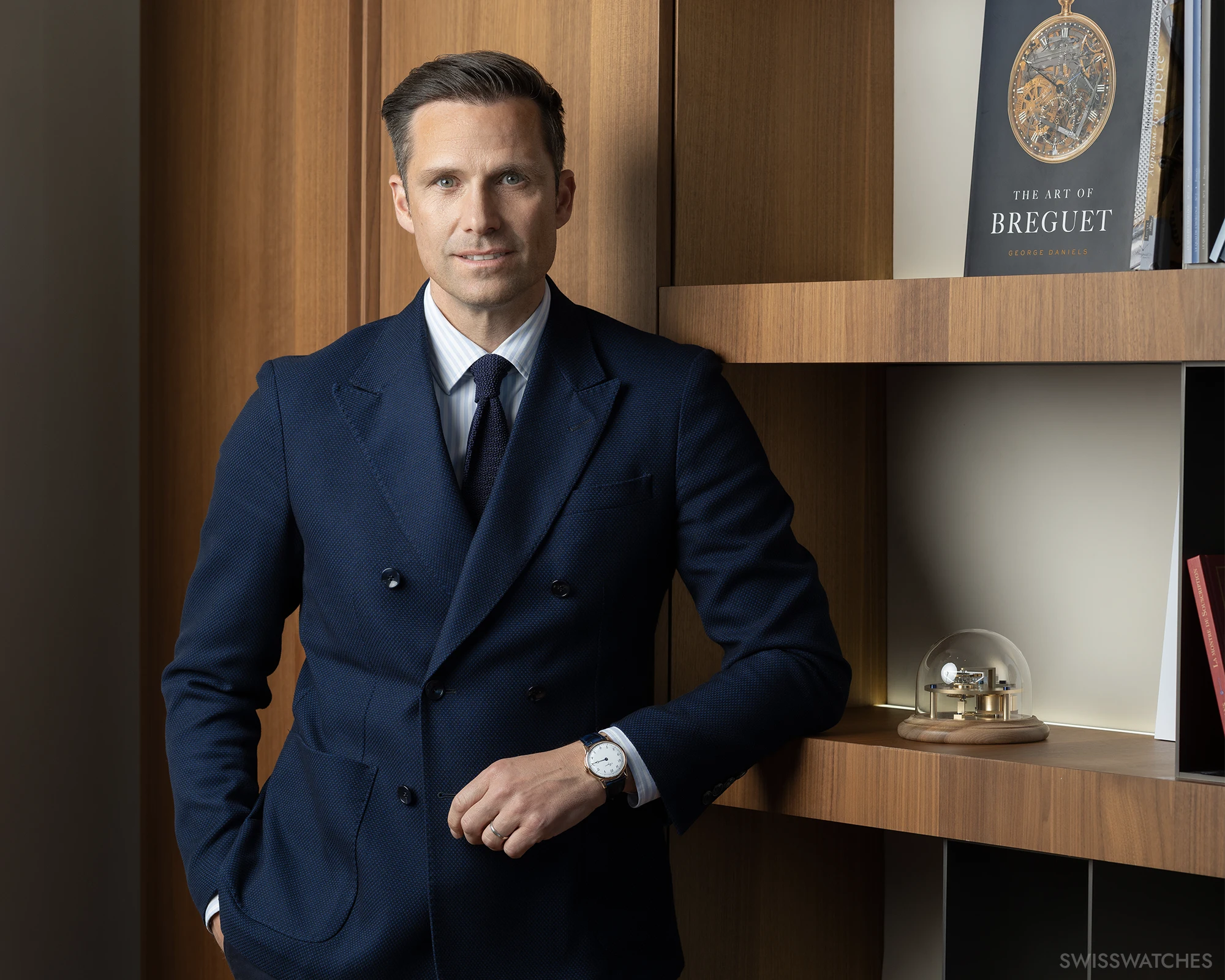
After more than 20 years at Omega, which of your long-term experiences can you now apply directly to product design at Breguet?
At Breguet, the product is the hero — that’s a phrase I often repeat. It originally came from Mr Hayek Sr., the founder of the Swatch Group. His philosophy was simple: what matters most for a brand is product, product, and product — followed by strong communication and good distribution.
So yes, the product comes first. But when you develop a new product, it’s essential to remain true to your identity. You don’t need to imitate or copy the past — but you should take inspiration from it. Heritage must inform innovation. That balance is crucial: it has to be understood internally, translated into design, R&D, and ultimately into production.
One example of this balance is the new Classique Souscription 2025, which features a secret signature — complemented by the word “Souscription” — both of which are only visible under the right light.
The secret signature is one of Breguet’s signature elements, just like the Breguet hands or numerals. We include it on guilloché and enamel dials. For this anniversary model, we wanted to return to a traditional engraving method: using a pantograph, as Breguet himself did. This engraving technique — originally developed to prevent counterfeiting — is still practised at the manufacture using historical tools. For the Classique Souscription 2025, we decided to revive that very same method, exactly as it was used in 1796.
That, to me, is the essence of fine watchmaking — bringing back techniques that are no longer in regular use. Adding a discreet element like the secret signature, made using such a rare and historic method, is exactly what sets these pieces apart.
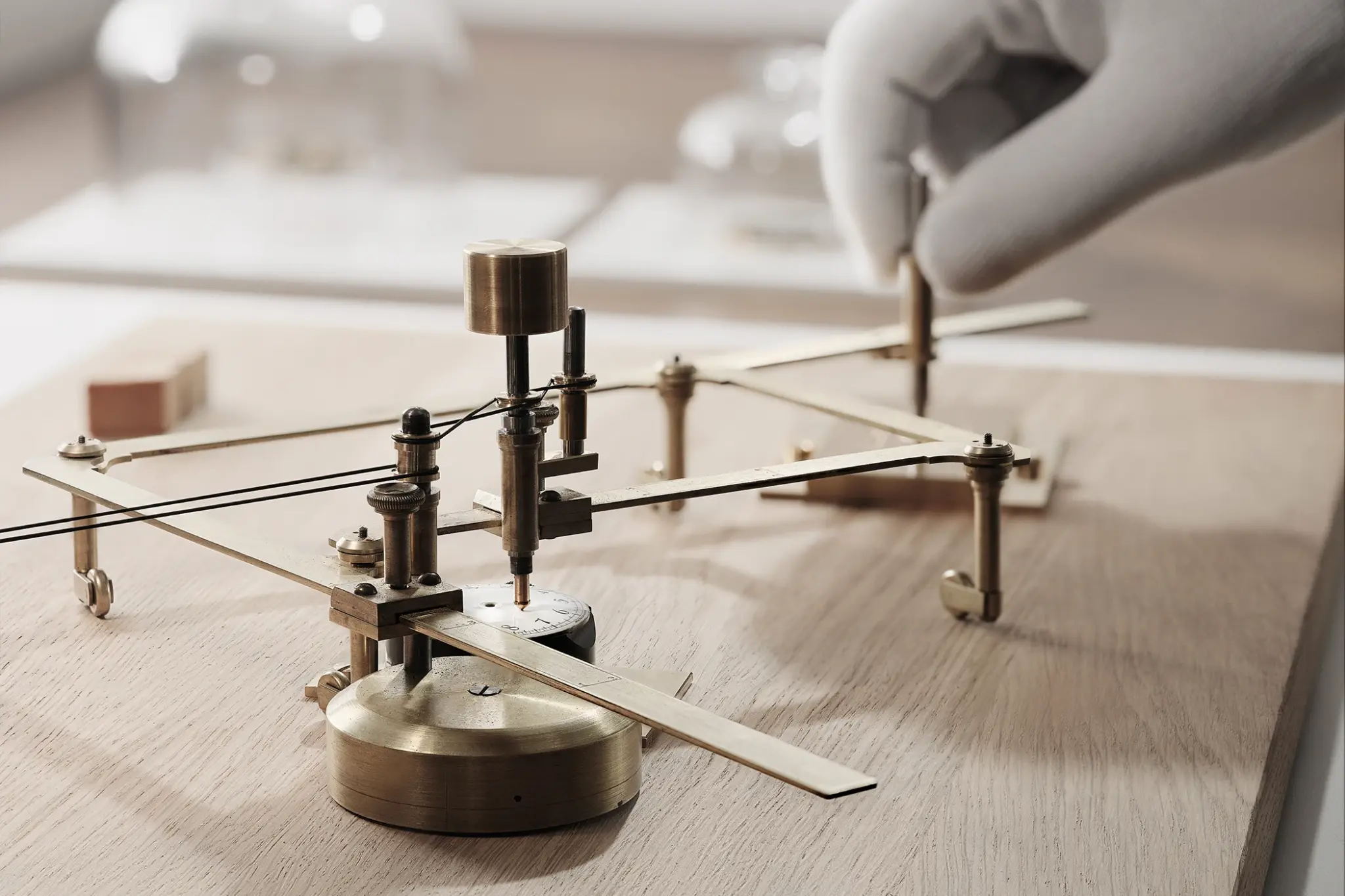
You will be communicating a new strategy based on the brand’s rich history and its inventions. However, in many cases, it takes customers and collectors several years to fully understand and embrace a new direction, campaign, or product. Is there a way to shorten this process, and how do you plan to achieve it?
There is a way — and part of it depends on you. By that, I mean communication: when you stay true to your product and your message, the impact is stronger. But communication is not just about strong visuals on a website. It’s about interviews, it’s about dialogue — having bloggers, journalists, and collectors talking about the brand.
Factory visits are one of our most effective tools. You can see the impact almost immediately — in the reactions of our customers, the press, or the media. There’s a sense of discovery. At Breguet, we are transparent about what we do, and how we do it.
Social media also helps to accelerate understanding and engagement. For existing clients, the awareness is already there — but with new products and new types of storytelling, it’s possible to reach a broader audience.
That’s why, instead of organising just one major anniversary event, we chose to go closer to the markets. The goal is to be more client-centric. And we’re using our global presence — our Breguet boutiques around the world — to connect with collectors on a more personal level.
You just mentioned the different markets. In which market is Breguet particularly strong — and where do you see the most potential, both existing and new?
We are strong in Asia, of course. China is currently a challenging market — not just for Breguet, but for the luxury sector as a whole. That said, it remains very important. South Korea and Japan are also key markets for us.
Beyond Asia, we are present in the Middle East and Europe. There’s definitely growth potential in the Middle East and in the United States — both markets where we see room to expand and connect with more clients.
At least in Europe, Breguet is not as prominent among serious collectors as it could be. What do you think are the reasons for this, and how do you view the situation?
I prefer not to focus on the past — that’s not my goal. What I do see is significant potential to regain space in the collectors’ market. The reasons for the gap may vary — possibly a lack of visibility, a lack of desirability, or simply low brand awareness.
But the potential is clearly there. That’s why we’re working to be closer to the end consumer. One step in that direction is the opening of more corporate boutiques. In a Breguet boutique, you have both the environment to showcase the watches properly and the people to convey the depth and richness of the brand.
We also want to make Breguet’s history more accessible. Our museum is located at 6 Place Vendôme in Paris — but for the 250th anniversary, we also intend to let pieces from the collection travel internationally. It’s important to show what Breguet stands for — and, just as importantly, to illustrate the connection between past and present.
Breguet may well be one of the few brands to have consistently preserved its design identity from the very beginning. If you compare a Breguet from 1780 to one made today, the connection is unmistakable. In contrast, many other brands base their designs on models from the 1950s, 60s or 70s — often without a clear link to their actual origins.
At Breguet, that continuity is evident — not only in the dials, with their guilloché decoration and balanced layout, but also in the architecture of the movements, which makes a Breguet calibre instantly recognisable. We are fortunate to have these two design signatures: the face of the watch, and the structure within.
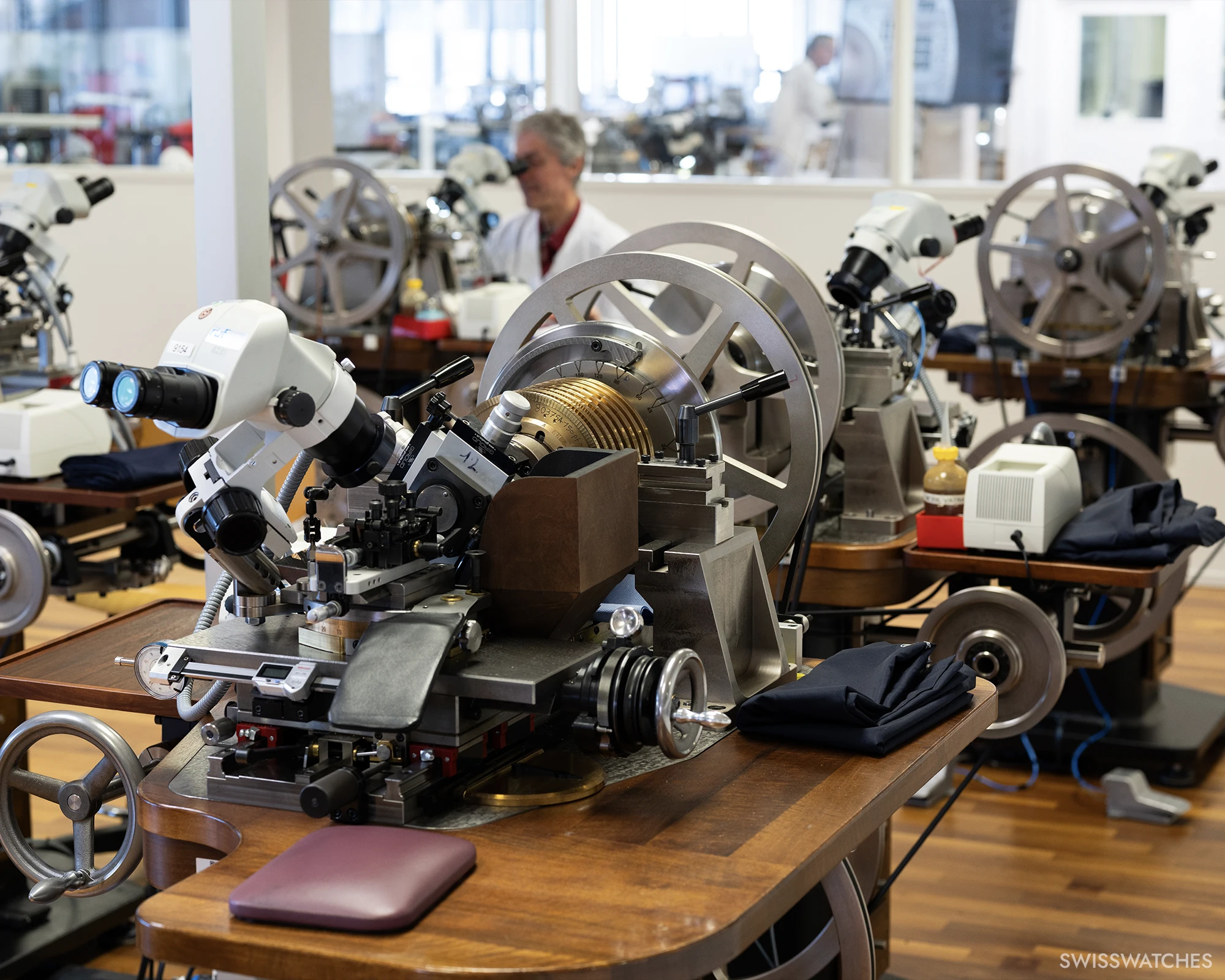
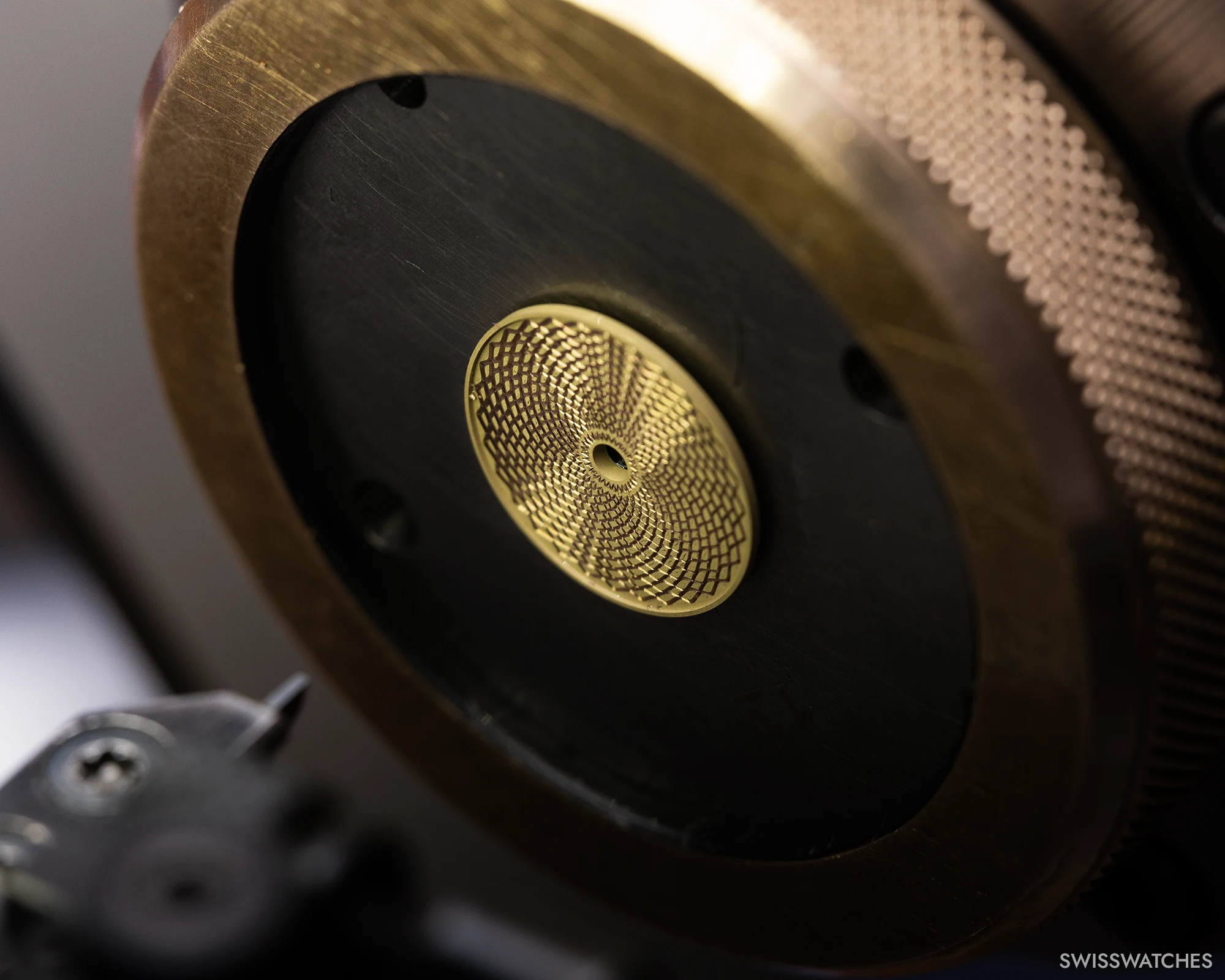
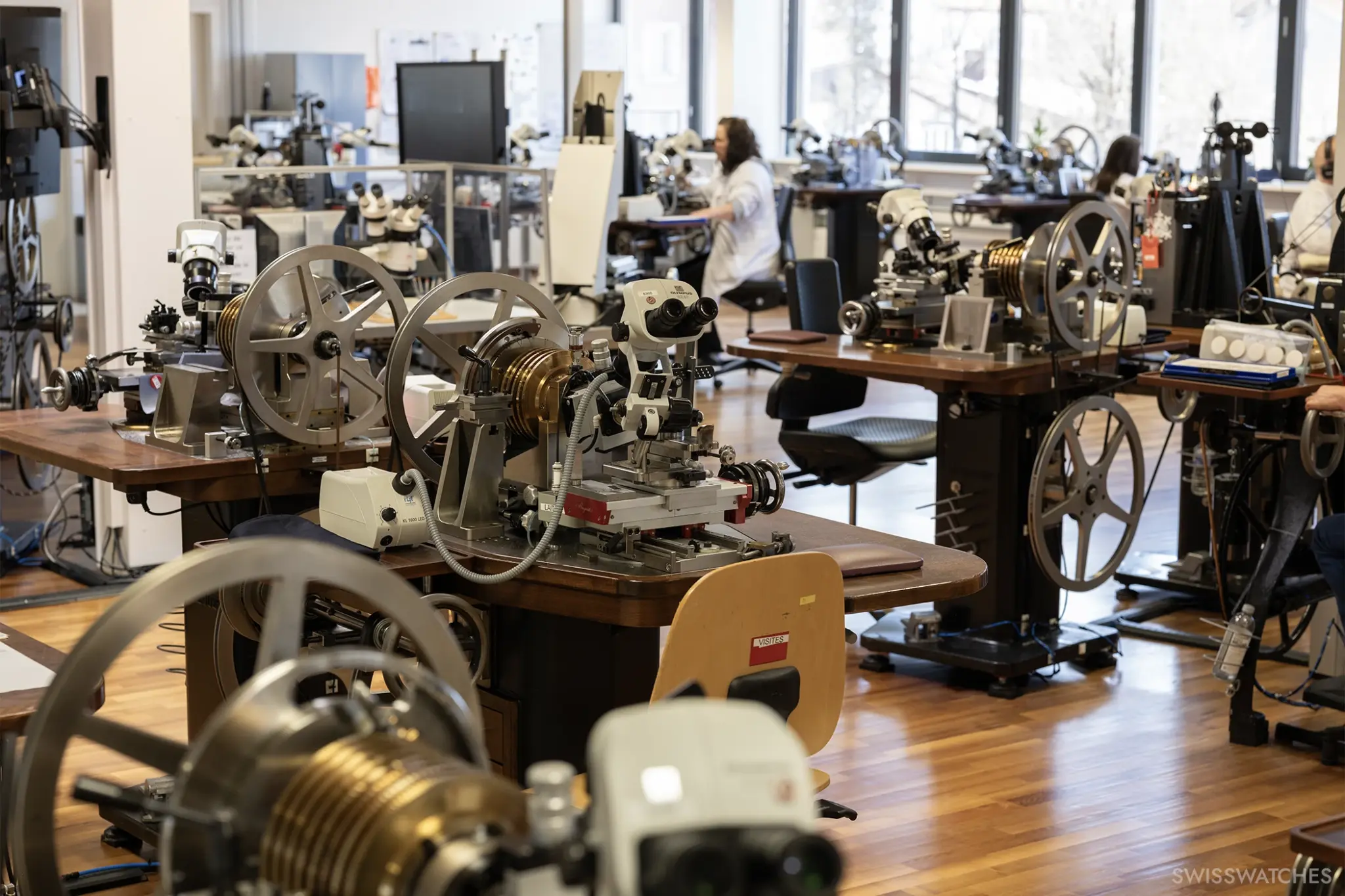
Many other brands have a single iconic model that everyone immediately recognises — like the Nautilus, Royal Oak, or Daytona. Does Breguet have such an icon in its current collection, or do you think creating one is something the brand needs to focus on for the future?
It’s difficult to point to a single watch — because at Breguet, we have several. Each of our collections represents a different chapter in the brand’s history, and each tells its own story.
Take the Type XX, for example: it’s linked to Breguet’s aviation heritage. Naturally, it has a very different character compared to the Classique.
Then there’s the Reine de Naples — not only the first wristwatch ever made, but also the first wristwatch specifically designed for women, dating back to 1810. That’s a piece with a great historical significance.
The Classique line is, in many ways, the signature of the brand — while the Tradition line expresses the same DNA but reveals the movement through its openworked architecture on the dial side. So both lines reflect Breguet’s core identity, but through different lenses.
So no — we don’t have just one icon. And that’s because we have too many stories to tell. Breguet stands for 250 years of uninterrupted creation and innovation. Our different collections reflect that depth — from aviation to naval heritage, such as the Marine line, which is rooted in Breguet’s role as official chronometer-maker to the French Royal Navy. That diversity is our strength.
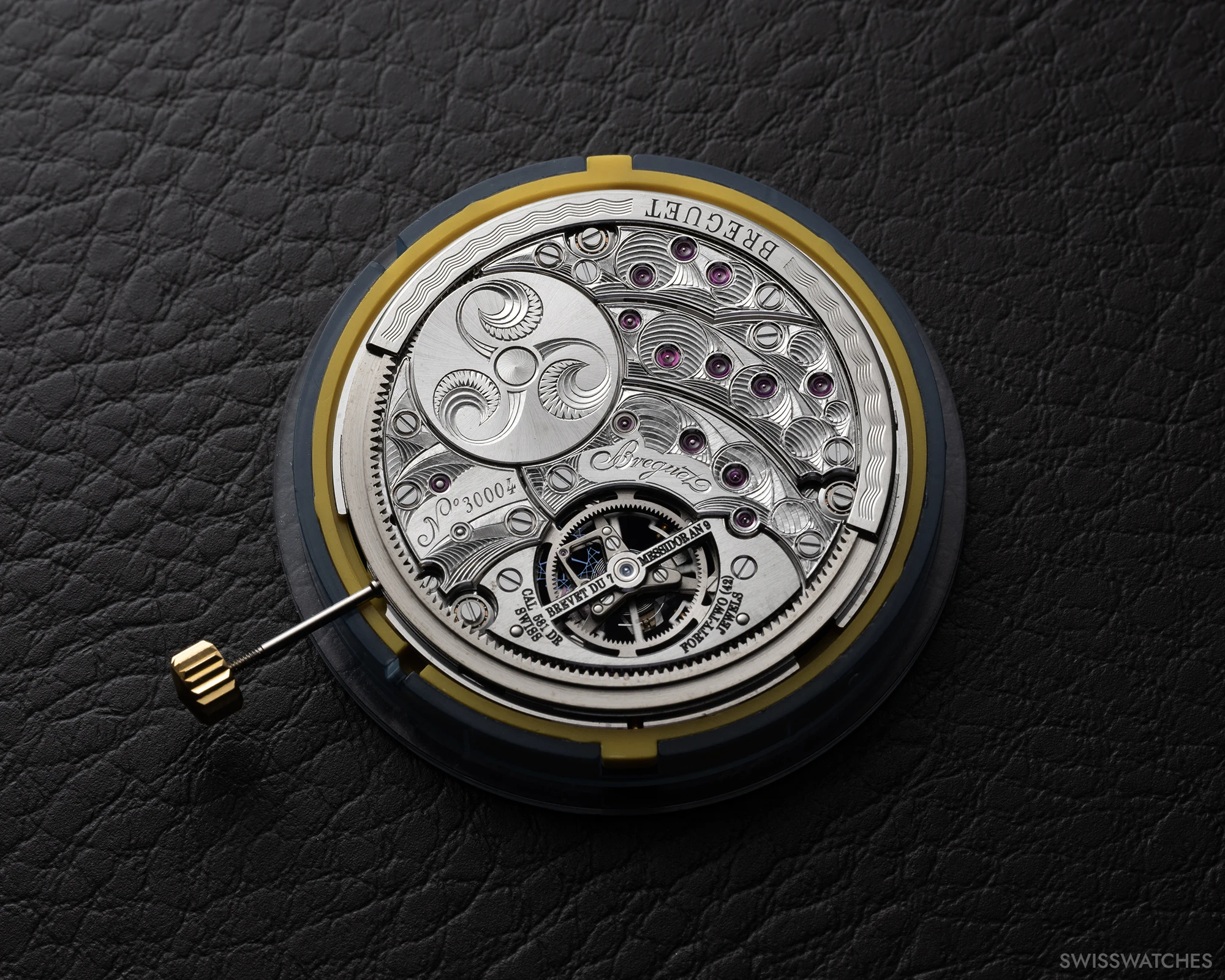
There are brands like Omega or Jaeger-LeCoultre that offer a broad range of collections, yet immediately evoke iconic lines such as the Speedmaster or the Reverso. Which line within Breguet’s portfolio would you consider truly emblematic of the brand?
If I had to choose one line as the face of the brand, for me it would be the Tradition. That collection is very close to the essence of Breguet — and it speaks strongly to collectors.
That said, the Classique line is also unmistakably Breguet. In a way, Tradition and Classique stand side by side — both are deeply rooted in the brand’s DNA, and both represent its identity in different but equally important ways.
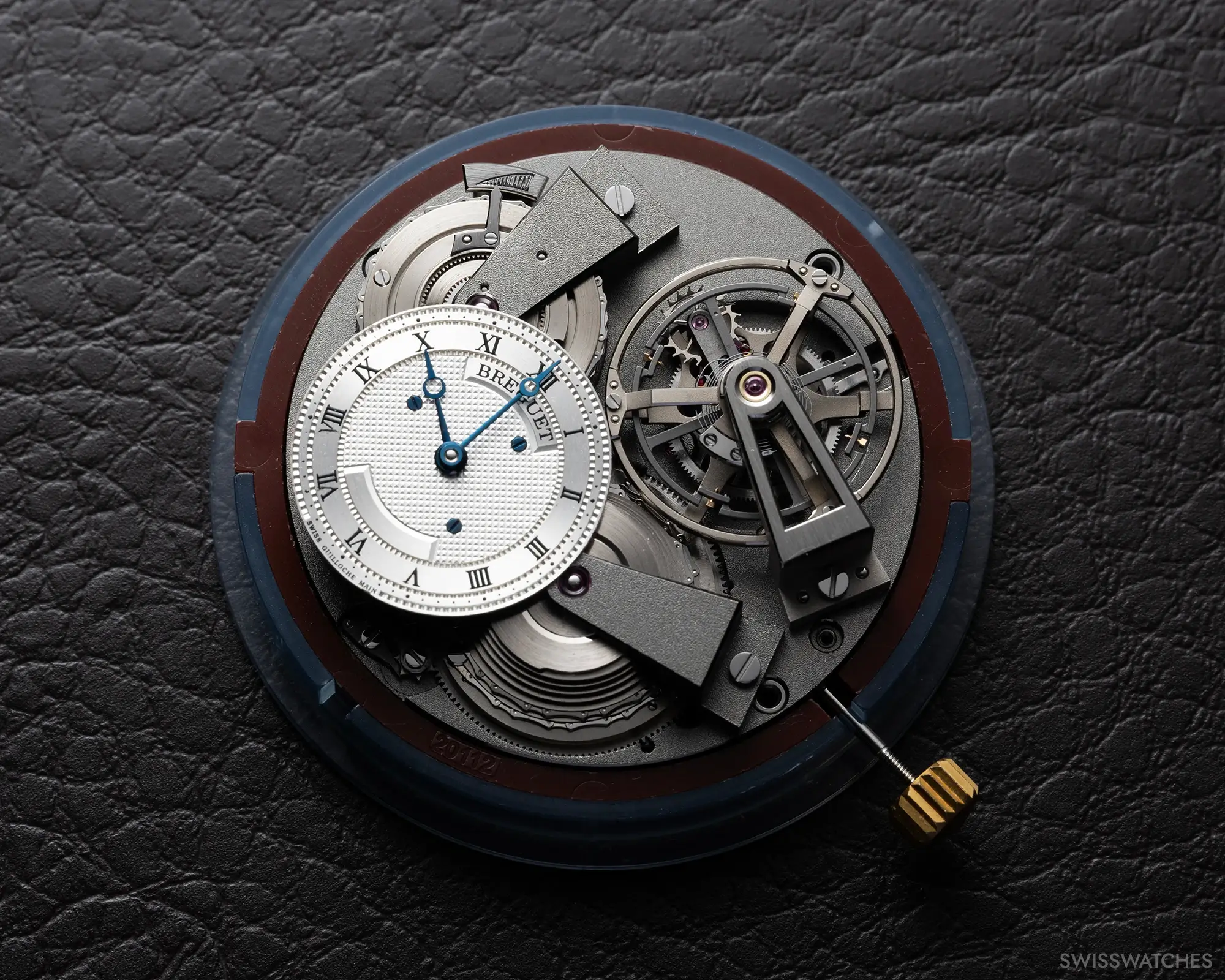
You mentioned that a Breguet movement is instantly recognisable through the caseback, and historically the brand has showcased impressive complications such as tourbillons, minute repeaters, and perpetual calendars. Given this strong legacy, do you still see room for technical or creative improvement in this area?
There is always room for innovation — always. And that’s exactly what we aim to do at Breguet: to push boundaries, but always with purpose. We don’t pursue innovation simply to generate patents or for novelty’s sake. It has to be meaningful — something that ultimately benefits the end consumer.
Our focus spans multiple directions: enhancing chronometric performance, introducing new complications, and further developing our movements. Innovation is deeply embedded in Breguet’s identity — and we intend to keep building on that foundation.
We are working on new developments, and by the end of the year, we’ll have something significant to share. So stay tuned.
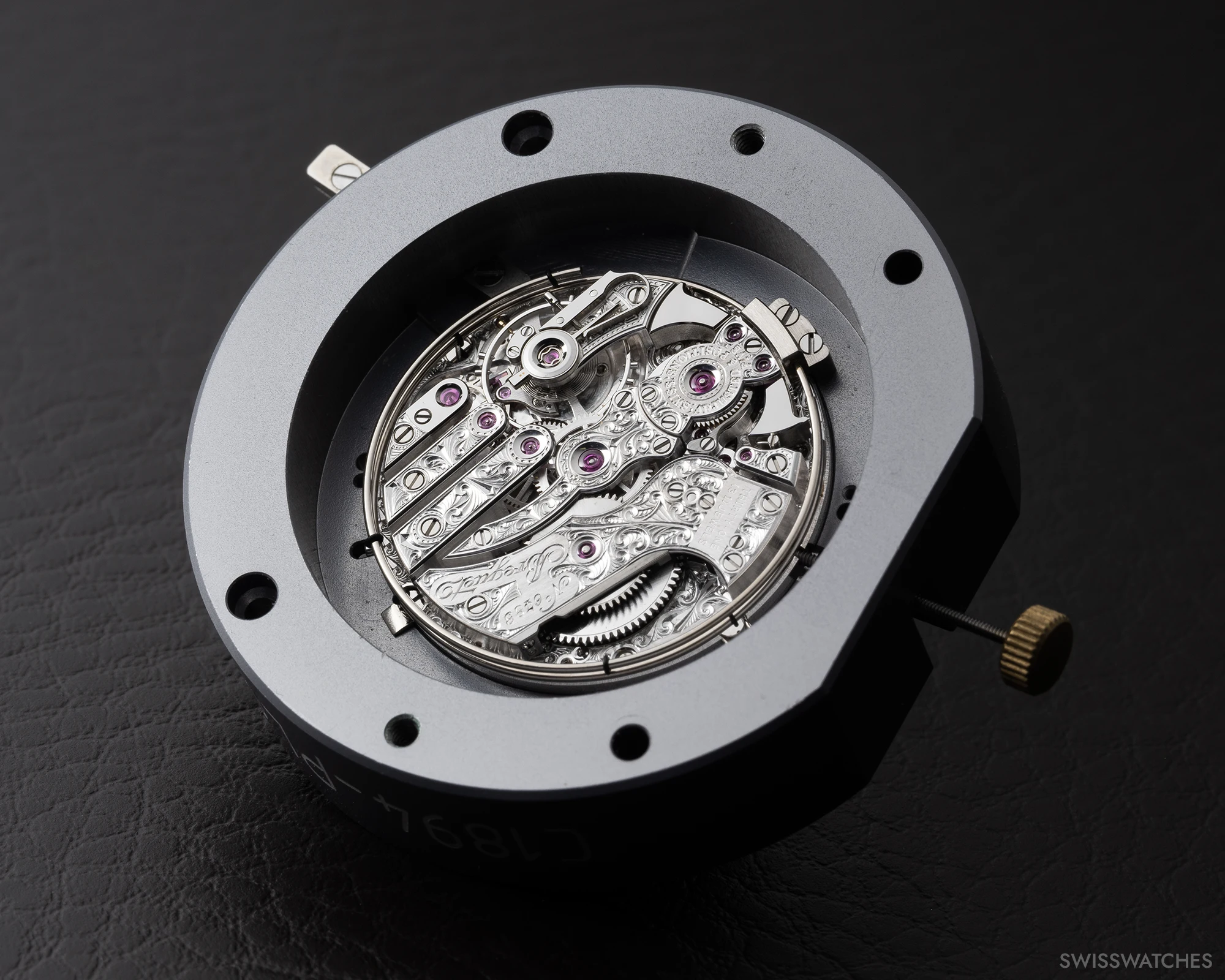
Let’s take a closer look at the novelty that opened the 250th anniversary celebrations — the Breguet Classique Souscription 2025. How did this idea come about, and why did you choose to launch a one-hand watch as the first piece to mark the anniversary? It’s quite a bold move, especially as a new CEO.
I have to say — it was a risky decision, but the right one. The idea was to surprise people. Many expected something more obvious — perhaps a major complication or another tourbillon, since tourbillons are so closely associated with Breguet.
But instead, we chose a watch that looks very simple — yet is full of refinement, and rich in historical meaning. This watch stands as a symbol of renewal for the brand, but also maintains a direct link to its past.
It references the montre de Souscription, which Breguet introduced after the French Revolution, at a time when he had to rebuild his business. It was a clever solution — not only from a product perspective, but also in terms of business approach and communication. The Souscription watch allowed him to restart operations through advance payments from clients — effectively introducing an early form of pre-ordering. And to promote this idea, he produced what is widely considered the first printed watch brochure in the industry, in 1797.
But you also introduced some subtle changes to the design — for example, the lugs. What was the intention behind these updates?
Yes, absolutely. While we took inspiration from the dial, the hands and the movement, we also wanted to introduce a sense of new identity. If you compare the Classique Souscription 2025 to other watches in the Classique line, you’ll notice that both the caseband and the lugs are slightly different. We deliberately changed the shape of the lugs to add a touch of modernity — and to give the watch a slightly more contemporary feel overall.
We also removed the fluted or coined caseband. If you look at the original montre de Souscription, the case sides were completely smooth. That’s why we decided to bring back this clean, pared-down aesthetic. The idea was to slightly “facelift” the case — not in a dramatic way, but enough to introduce a more modern visual language.
Another important factor was wearability. With a 40 mm diameter, this is relatively large for a classic watch — but that size was chosen for a reason: legibility. A smaller size, like 36 mm, would make it more difficult to read the time with a single hand. Forty millimetres strikes the right balance.
And finally, the design of the lugs also plays a key role in how the watch wears. The new shape improves ergonomics and ensures the watch sits comfortably on the wrist.
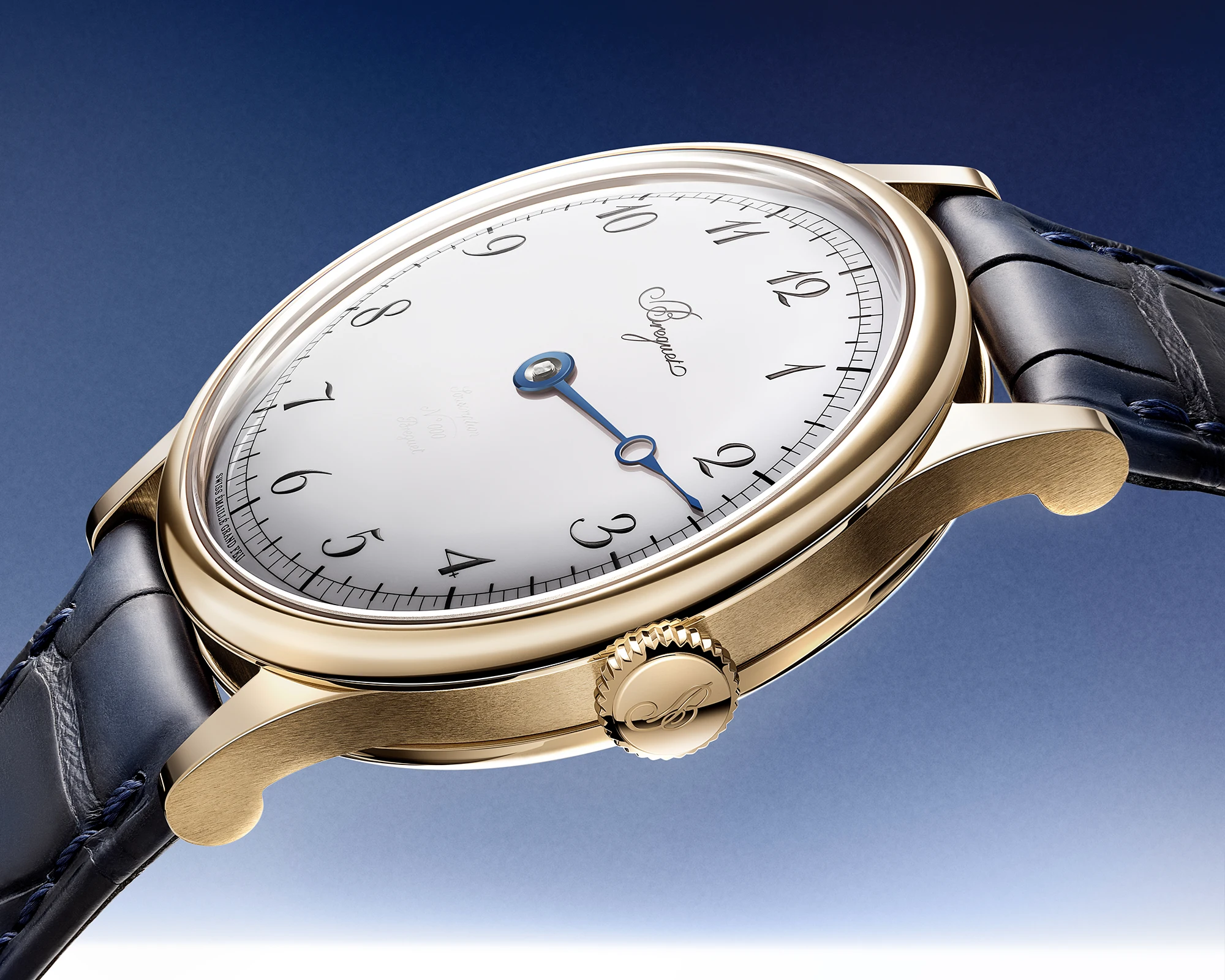
Do these design choices signal a direction that could influence other collections in the future as well?
Not all models — but yes, you will start to see certain pieces adopting this new direction.
One important feature of the Classique Souscription 2025 that’s worth highlighting is the Chevé sapphire crystal. We recently discovered that Abraham-Louis Breguet was actually the inventor of the Chevé shape. At the time, watch crystals were fully domed. Breguet wanted to reduce the overall thickness of his pocket watches and came up with a different profile.
The Chevé shape is flat on top, with curved edges — allowing for a thinner case appearance and a smoother transition to the bezel. That’s why we decided to bring this element into the Classique Souscription 2025: to tell a historical story, but also to reduce the visual thickness of the watch and bring more light to the outer minute track.
From a collector’s perspective, much of the feedback on the Classique Souscription 2025 has been very positive. However, discussion has focused on the price point of €52,300, which a number of collectors consider relatively high for a one-hand watch. How was this pricing decision made, and what was the strategic thinking behind positioning the watch at this level?
The pricing is consistent with the rest of the Classique collection — and reflects the depth of what the watch offers. The key factor is the movement, which features a particularly high level of finishing. The surface graining, for example, is even finer than in the Tradition line.
Then there’s the dial: a white enamel dial produced using the grand feu technique, paired with traditional Breguet numerals. It also carries the secret signature, engraved using a pantograph — one from Abraham-Louis Breguet’s period. The Breguet hands, with their characteristic open tips, are hand-bent and flame-blued — a time-consuming and precise process requiring great skill.
Although it may look simple at first glance, producing a one-hand watch with this level of detail is actually quite demanding. The simplicity is intentional — and in watchmaking, simplicity often takes more effort to realise than complexity.
Additional details, such as the guilloché on the caseback, add further refinement. So yes, the price reflects not just the visible result but also the level of craftsmanship behind it.
That’s also why we decided to show more than just the final product — we released behind-the-scenes photos and videos to highlight how much care and manual work goes into making this watch.
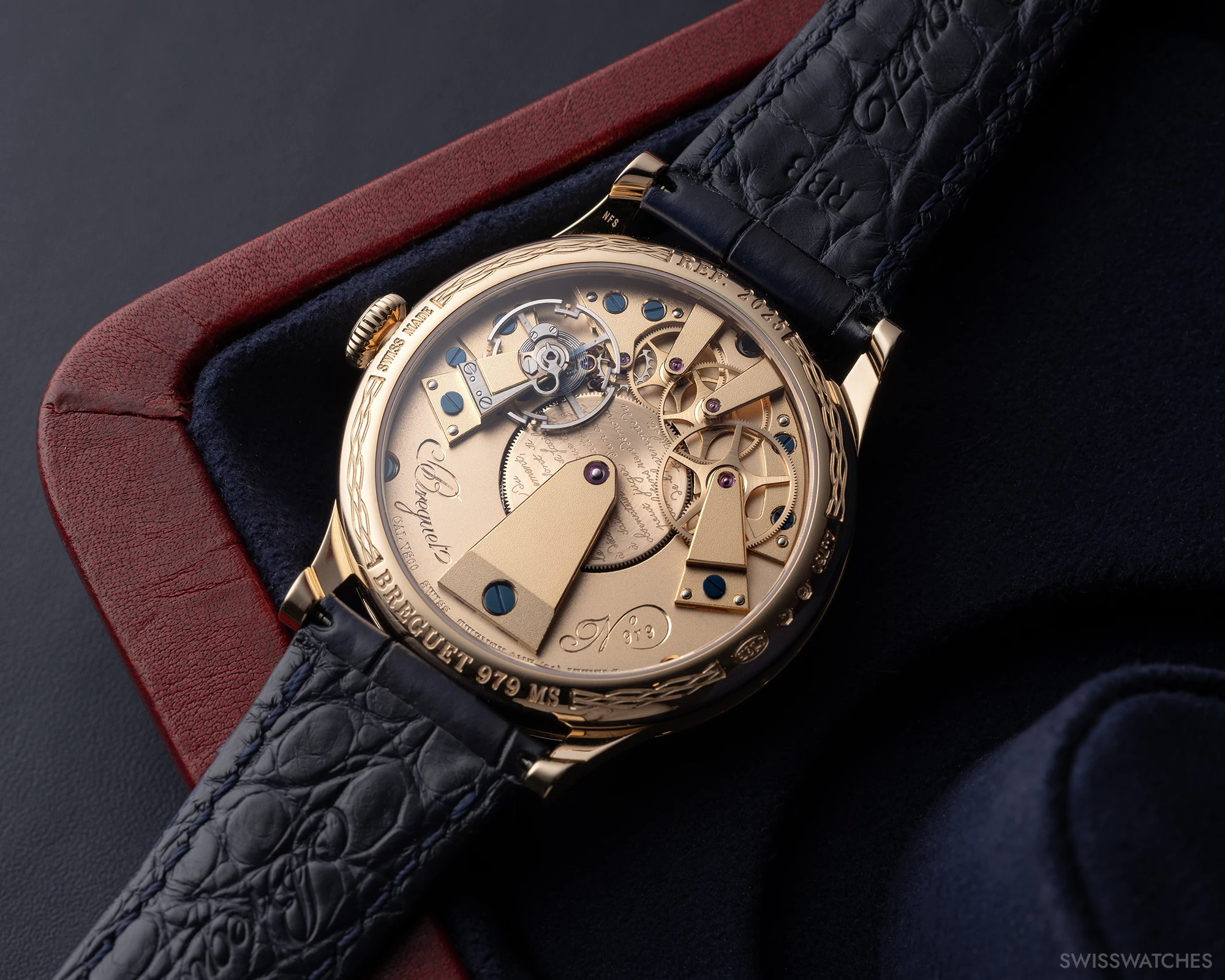
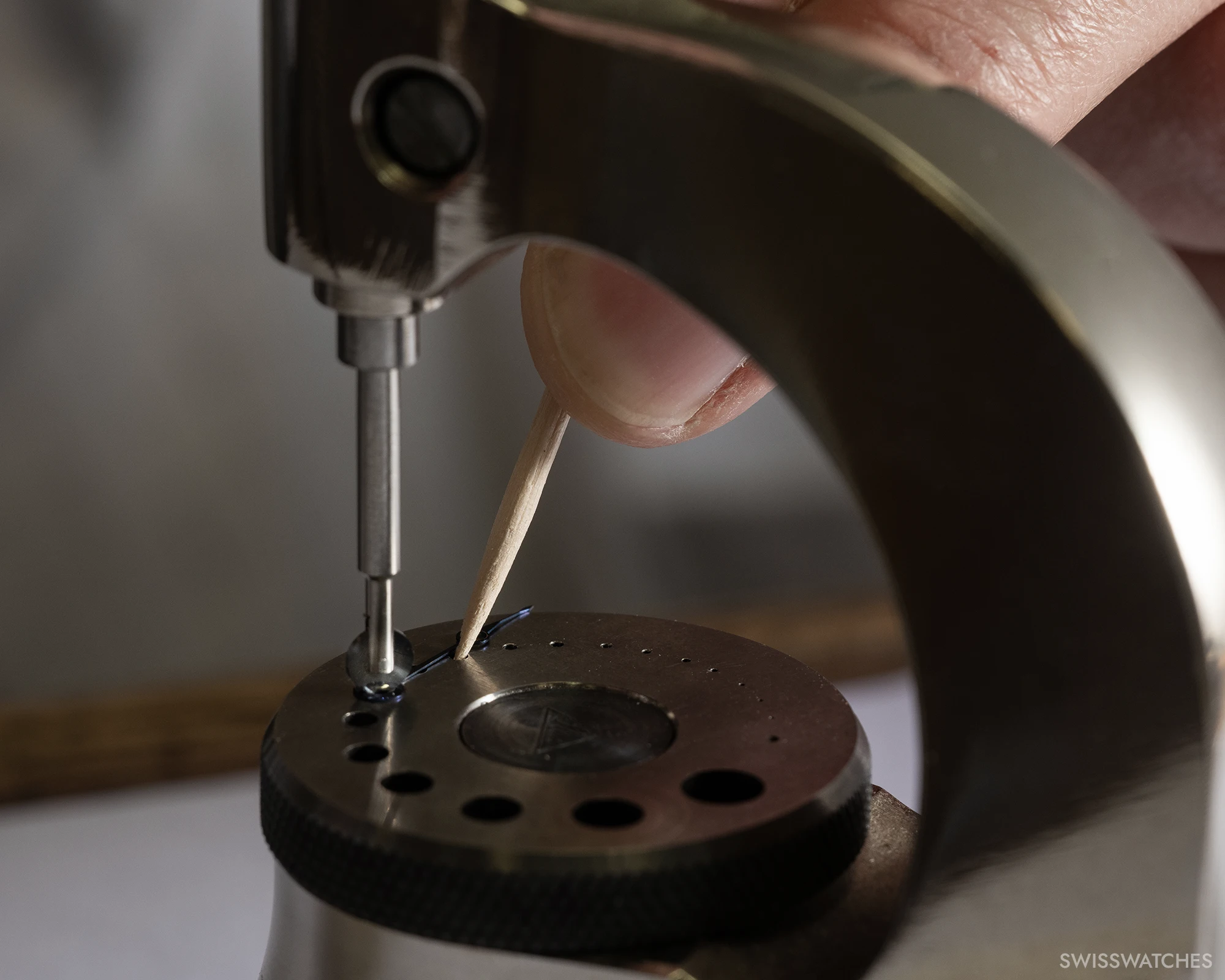
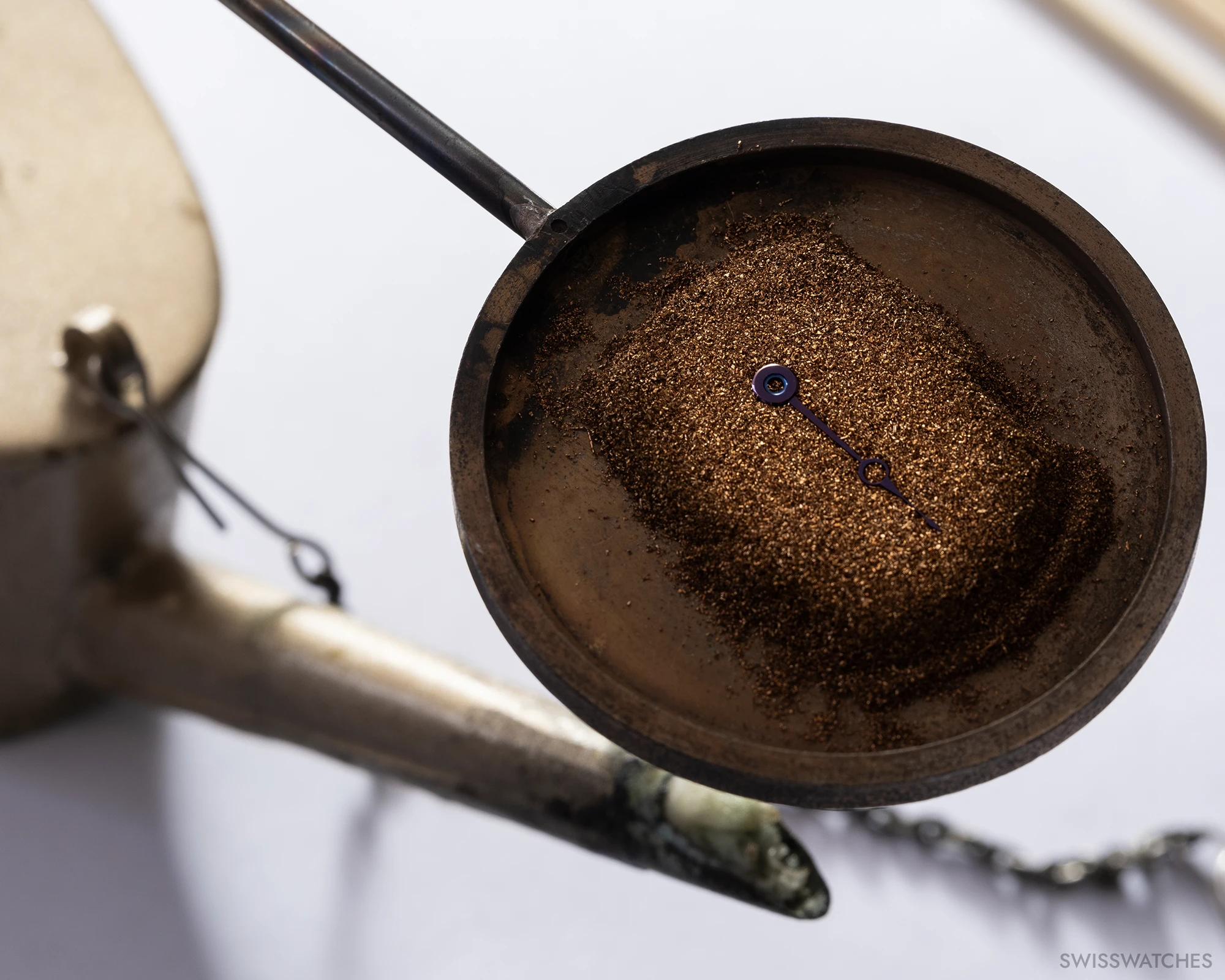
Watches and Wonders 2025, the world’s most important watch fair, recently took place in Geneva — without Breguet’s participation. Do you believe this is a stage where the brand should play a role in the future?
There are different ways of reaching clients and the press. From a media point of view, I can understand the advantage of having many brands in one place. But for Breguet — as well as for the other brands in the Swatch Group — we’ve opted for a different approach.
Our strategy is to engage more directly with the markets and to get closer to our clients. That’s why we at Breguet chose to organise a world tour for the 250th anniversary, rather than attend a centralised fair. This decision also reflects a broader direction taken by the Swatch Group.
